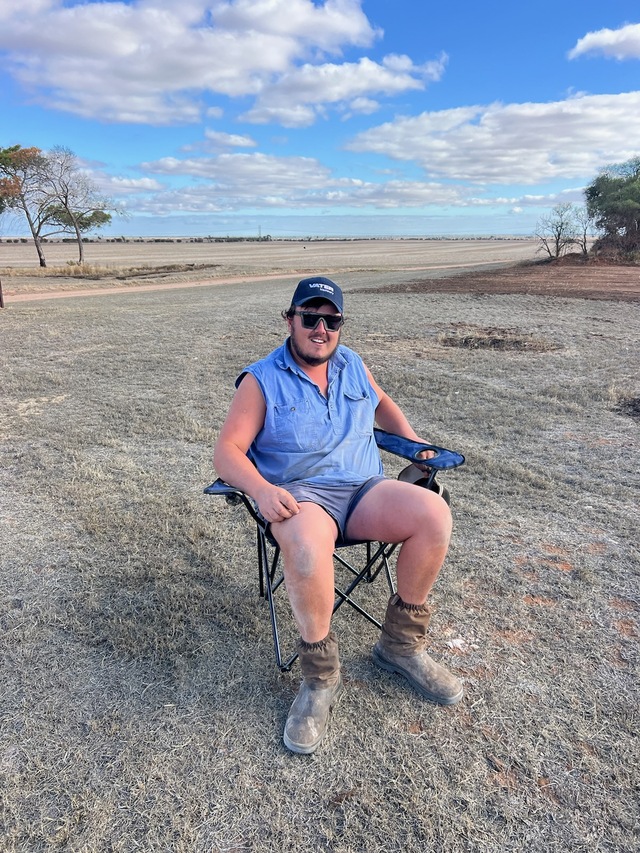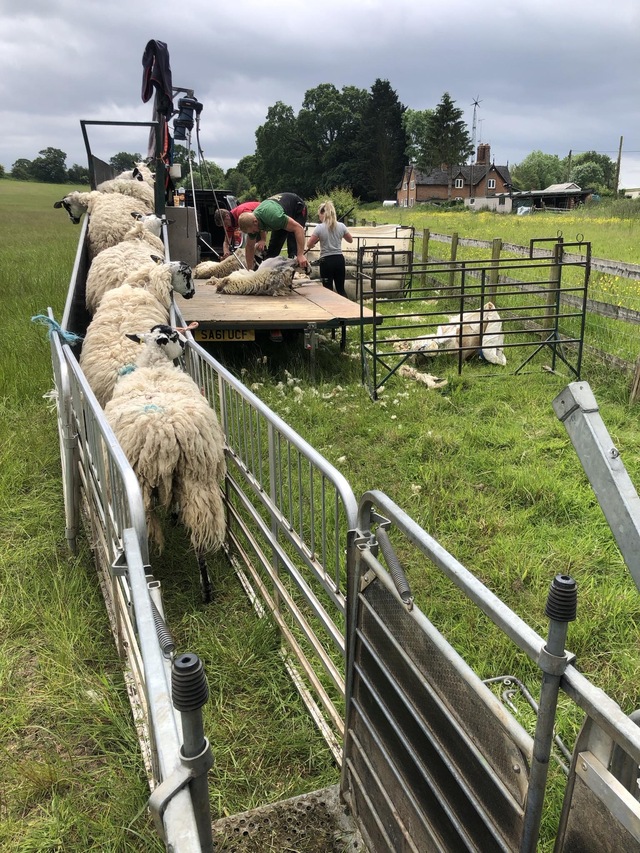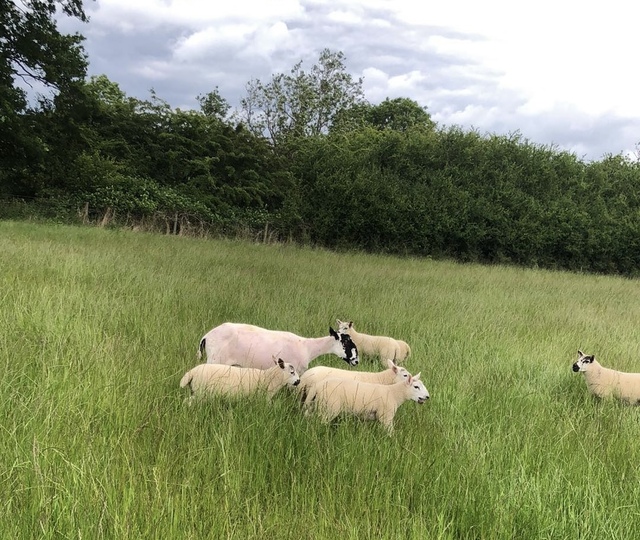According to Brian Parker’s rainfall records at Owen, we have had 31mm to date, which is the lowest total since 1953 when he started taking records.
In case you are wondering, he ended up with 443mm (17”) for the season. So, all is not lost.
Do not spit the dummy quite yet. For those that are doubting my season break call, to be honest, there were only about three entries left and I had prizes to deliver.
It is rather disheartening to watch Sydney being inundated with floodwaters, whilst we canot even jag 25mm. Anyway, congratulations to Jake Harkness from Owen, pictured below with his new deck chair and cap, thanks to Vater Machinery.
The other winner, Paul Lange, will feature soon.
The Grain Market
I contacted Paul Lange from Centre State Exports to congratulate him on being one of the driest ever season break winners. In return, he furnished us with a bit of a snapshot of the current grain market.
“I wish I could be happy about picking the so called ‘opening rain’ for the season. Albeit some rain and just enough for some to get a crop out of the ground, but for much of the state it wasn’t quite enough.
“There is a lot of concern about what is going to germinate and when, and if it can hang in until a real rain comes through. Grain markets internationally have settled in the past few days, but we have seen a significant rally in wheat and canola markets both in Europe and in North America over the past month or so.
“Weather concerns for parts of the US and Canadian plains, combined with some hot dry damaging conditions in Russia, and a poor start for much of Australia, has caused an about face in sentiment in the market globally. Local markets have reacted strongly not only to international markets but to local
conditions too.
“Grain prices and demand is much better than was anticipated but unfortunately it is for all the wrong reasons. Although still early enough here, with no
significant rain forecast there is increasing concern about how potential yield is being impacted.
“Understandably, forward selling of this year’s crop has been limited as a result, helping support prices locally. The older, wiser members of our farming communities will recall years where late starts have resulted in bumper crops, so all is not lost. Just add water!” (Paul Lange, Centre State Exports)
The Fertiliser Market
I caught up with Derryn Stringer for the latest on what is a very complex fertiliser market worldwide. Fortunately, the market is soft at the moment, but outside forces are trending it back up. Pricing had dropped to below $750 a tonne. According to Derryn:
“There are ongoing shipping issues in the Red Sea. Egypt remains the main supplier of urea to Europe.
“However, Egypt has currently run out of gas, which is forcing Europe to source urea from more distant suppliers. This situation has driven up urea
prices globally and is expected to continue affecting the market for the foreseeable future.
“Prices are likely to rise for the next 2-3 weeks before potentially easing back to previous levels. However, products ordered in mid-July may face delayed arrival in Australia till mid to late September, which might be too late for some needs.” (Derryn Stringer)
Shearing in Shakespeare country
Shearing is underway in Warwick, United Kingdom. Roger Mann of Littleworth Farm at Norton Lindsay, had about 1000 sheep to shear last week.
These are North Country Mule ewes, which are a cross with a blue face Leicester ram and a Swaledale ewe. The shearing contractors bring their own mobile setup and sheep are shorn outdoors on a trailer and released back into the field with their lambs.
They can shear about 250 to 300 per day but it’s not often there are that many in one location to get that number done. Cost-wise it is about $3.60 per head to shear, with the wool from a thousand sheep bringing in just $485.
Some farmers burn their wool, whilst others leave it to rot. Roger sells his. The ewes lamb in March-April and he breeds fat lambs for the local abattoir.








